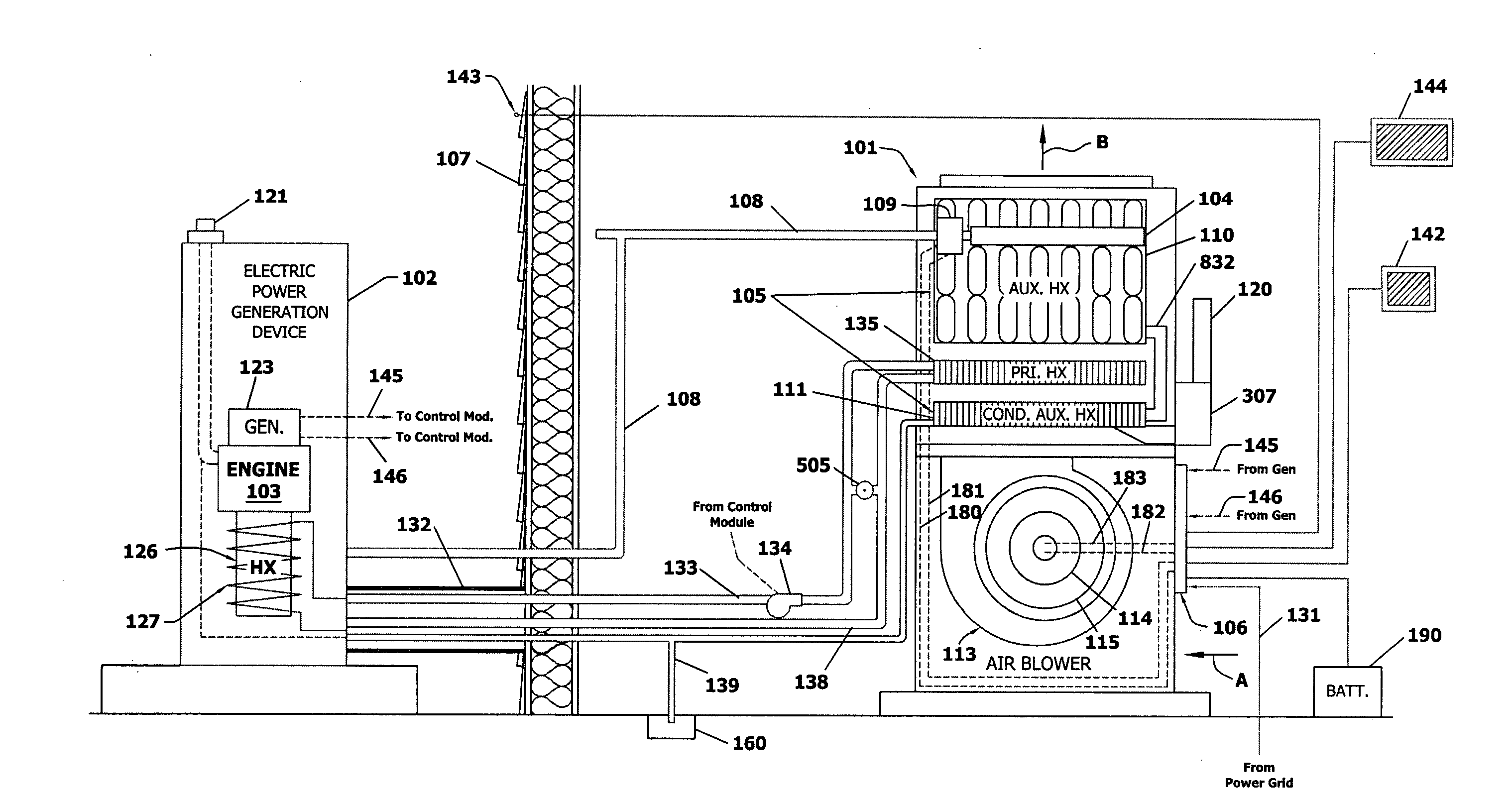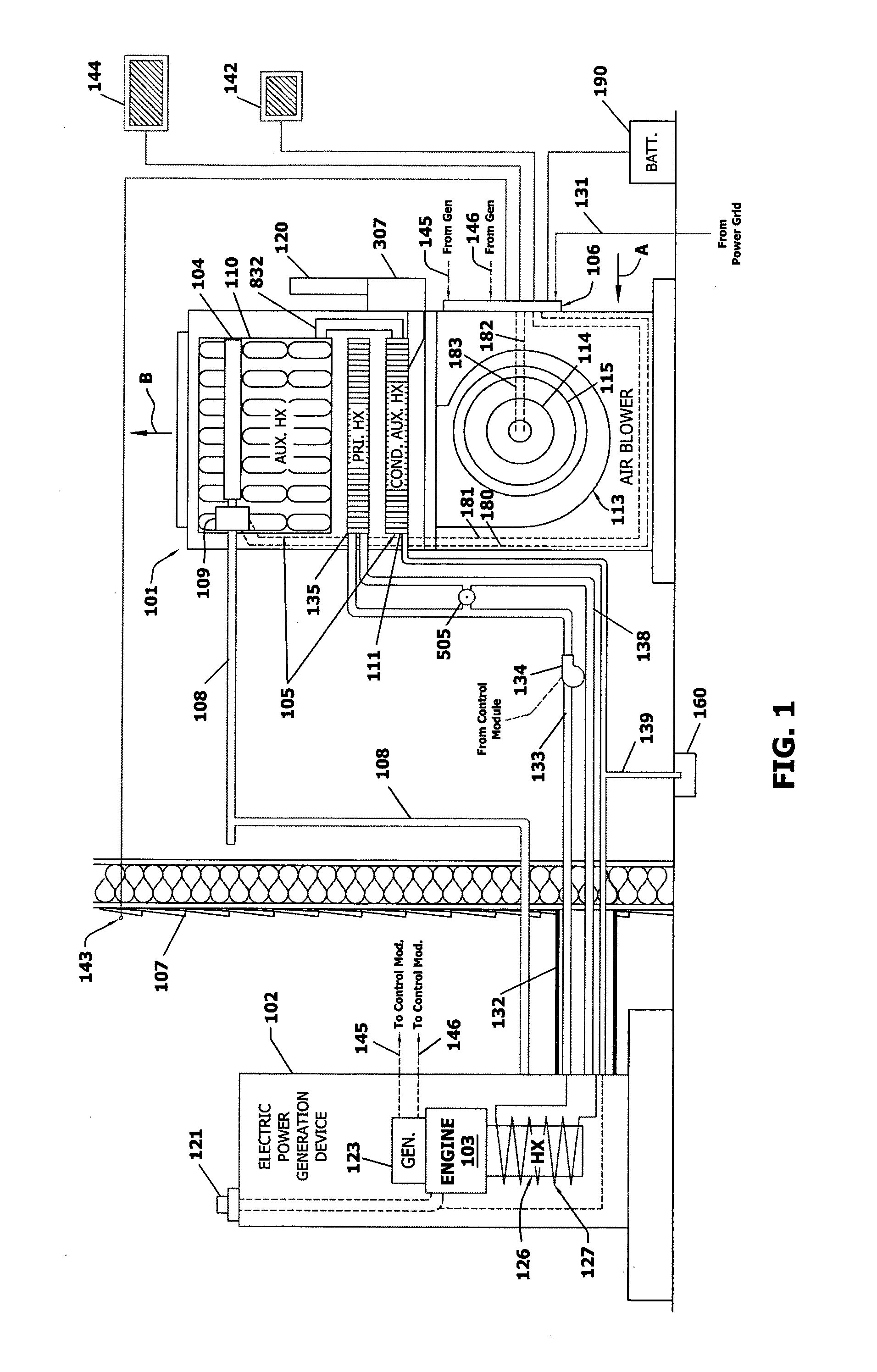System and method for warm air space heating with electrical power generation
a technology of electrical power generation and warm air space, which is applied in the direction of lighting and heating apparatus, machine/engine, heating type, etc., can solve the problems of large fraction of fuel energy normally dispersed as waste heat, no widespread use of small-scale cogeneration, and little attention to how such small-scale power generation technologies are applied
- Summary
- Abstract
- Description
- Claims
- Application Information
AI Technical Summary
Benefits of technology
Problems solved by technology
Method used
Image
Examples
Embodiment Construction
[0022]FIG. 1 illustrates a warm air micro-CHP system installed in a typical residential application according to an embodiment of this invention. The air heating assembly 101 is located within the interior of the residence space. The electric power generator 102 is located outdoors. While not shown, a series of vents and ducts interconnect with the air heating assembly to channel heated (and optionally) cooled air to various points in the structure. For smaller installations, the air heating assembly may vent directly into the space without significant runs of ductwork. Likewise, return air can enter a duct adjacent the system 101 or be channeled from a remote location(s) in the structure via appropriate ductwork (not shown).
[0023] In this embodiment the air heating assembly 101 is interconnected by a coolant loop to a power generator 102 that is located outside the structure, on the opposite side of the building wall 107. As defined herein, the power generator 102 can be any accep...
PUM
 Login to View More
Login to View More Abstract
Description
Claims
Application Information
 Login to View More
Login to View More - R&D
- Intellectual Property
- Life Sciences
- Materials
- Tech Scout
- Unparalleled Data Quality
- Higher Quality Content
- 60% Fewer Hallucinations
Browse by: Latest US Patents, China's latest patents, Technical Efficacy Thesaurus, Application Domain, Technology Topic, Popular Technical Reports.
© 2025 PatSnap. All rights reserved.Legal|Privacy policy|Modern Slavery Act Transparency Statement|Sitemap|About US| Contact US: help@patsnap.com



